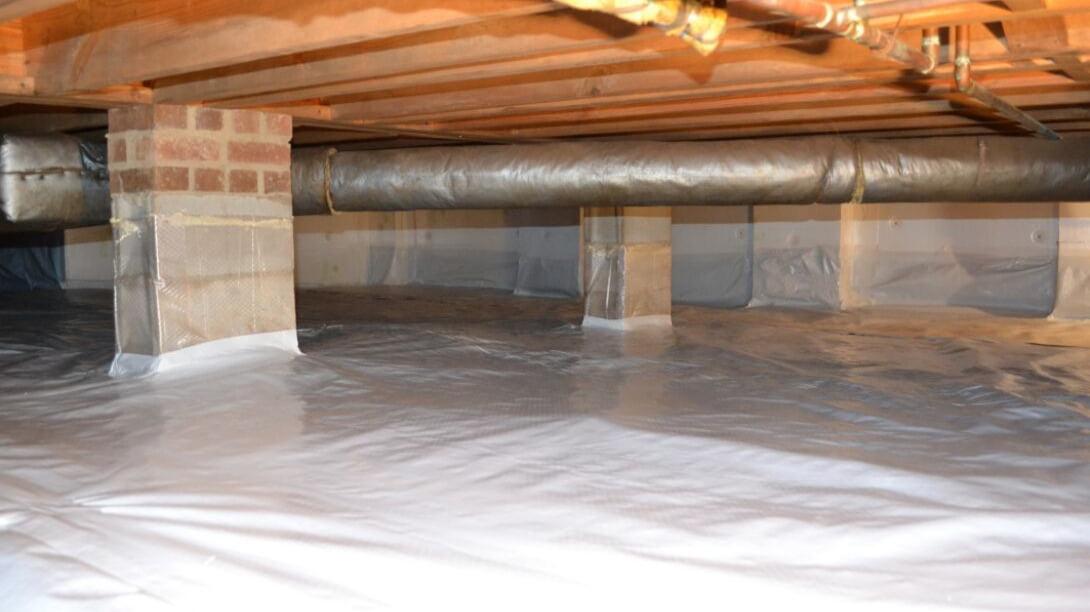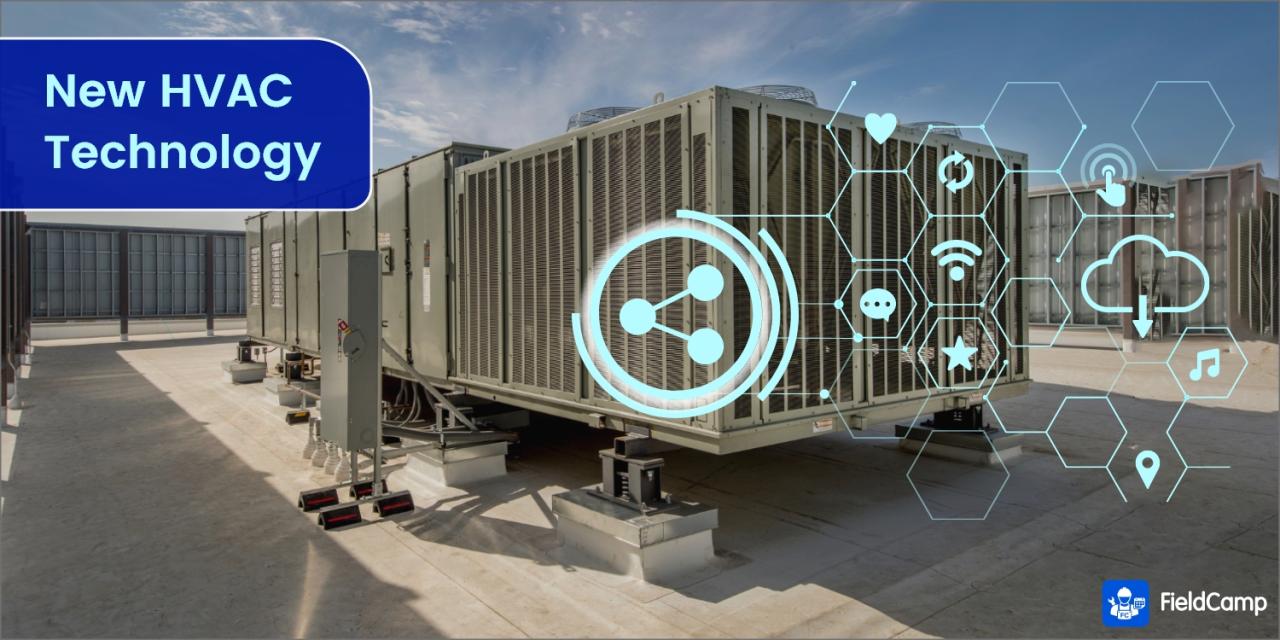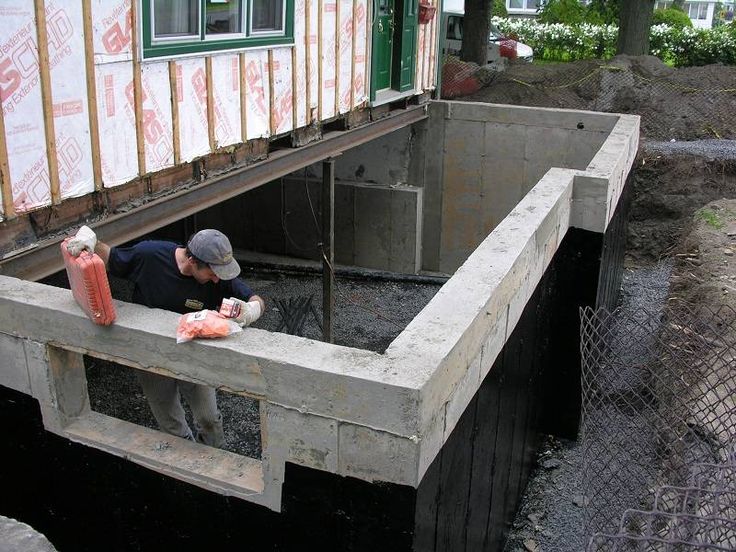Roof Technologies: Transforming the Way We Build
Roof technologies are undergoing a revolution, moving beyond traditional materials and methods to embrace innovation and sustainability. From the evolution of roofing materials, incorporating high-performance options like metal roofing and […]

Roof technologies are undergoing a revolution, moving beyond traditional materials and methods to embrace innovation and sustainability. From the evolution of roofing materials, incorporating high-performance options like metal roofing and solar shingles, to the advancement of installation techniques and the integration of smart technologies, the roofing industry is constantly evolving to meet the demands of a changing world.
This exploration delves into the diverse landscape of roof technologies, examining the materials, installation methods, maintenance practices, and emerging trends that are shaping the future of roofing. We’ll explore the advantages and disadvantages of different materials, discuss the importance of proper installation and ventilation, and delve into the exciting world of smart roofing systems and sustainable solutions.
Roofing Materials
The roof is a critical component of any building, providing protection from the elements and contributing significantly to the overall aesthetics. Over time, roofing materials have evolved, with advancements in technology and a focus on sustainability leading to a wide array of options. This section explores the evolution of roofing materials, compares their advantages and disadvantages, and highlights innovative materials that are shaping the future of roofing.
Evolution of Roofing Materials
The evolution of roofing materials reflects the changing needs and priorities of society. Traditional materials like asphalt shingles, wood shakes, and clay tiles have been used for centuries, offering durability and affordability. However, these materials often require frequent maintenance and may not be as energy-efficient as newer options.
- Asphalt Shingles: The most popular roofing material in North America, asphalt shingles offer affordability and ease of installation. They are available in a variety of colors and styles, but they are susceptible to damage from extreme weather conditions and have a relatively short lifespan.
- Wood Shakes: Natural wood shakes provide a rustic and aesthetically pleasing look, but they are more expensive than asphalt shingles and require regular maintenance to prevent rot and insect infestation.
- Clay Tiles: Clay tiles offer exceptional durability and longevity, lasting for decades with proper maintenance. However, they are heavy and require specialized installation, making them more expensive than other options.
In recent decades, modern materials like metal roofing, solar shingles, and synthetic roofing have gained popularity due to their superior performance, durability, and sustainability.
- Metal Roofing: Metal roofs offer excellent durability, fire resistance, and energy efficiency. They are typically made from steel, aluminum, or copper and can last for 50 years or more with proper maintenance. Metal roofs can be painted to match any aesthetic preference, making them a versatile option for both residential and commercial buildings.
- Solar Shingles: Solar shingles combine the functionality of traditional roofing with the benefits of solar energy. These shingles are integrated with photovoltaic cells that convert sunlight into electricity, reducing energy consumption and lowering utility bills. While solar shingles are more expensive than traditional shingles, their long-term cost savings and environmental benefits make them a compelling investment.
- Synthetic Roofing: Synthetic roofing materials, such as rubber or plastic, offer durability, low maintenance, and energy efficiency. They are often designed to mimic the appearance of traditional materials like wood shakes or slate tiles, providing a versatile and aesthetically pleasing option.
Advantages and Disadvantages of Roofing Materials
The choice of roofing material depends on several factors, including budget, aesthetic preferences, climate, and desired lifespan. Each material has its unique advantages and disadvantages:
Durability
- Metal Roofing: Metal roofs are known for their exceptional durability and longevity. They are resistant to fire, wind, and hail damage, making them a reliable choice for areas prone to extreme weather conditions. They can last for 50 years or more with proper maintenance.
- Clay Tiles: Clay tiles are another durable option, lasting for decades with proper maintenance. They are resistant to fire, wind, and hail damage, making them a good choice for areas prone to extreme weather conditions.
- Asphalt Shingles: Asphalt shingles have a shorter lifespan than metal or clay tiles, typically lasting for 15-20 years. They are susceptible to damage from extreme weather conditions, such as hail and strong winds.
- Wood Shakes: Wood shakes are less durable than metal or clay tiles and require regular maintenance to prevent rot and insect infestation. They can last for 15-20 years with proper care.
Cost
- Asphalt Shingles: Asphalt shingles are the most affordable roofing material, making them a popular choice for budget-conscious homeowners.
- Wood Shakes: Wood shakes are more expensive than asphalt shingles, but less expensive than metal or clay tiles.
- Metal Roofing: Metal roofing is more expensive than asphalt shingles or wood shakes, but its longevity and durability make it a cost-effective investment over time.
- Clay Tiles: Clay tiles are the most expensive roofing material, but their longevity and durability make them a worthwhile investment for those seeking a long-lasting and aesthetically pleasing roof.
- Solar Shingles: Solar shingles are the most expensive roofing material, but their long-term cost savings and environmental benefits make them a compelling investment for homeowners looking to reduce their energy consumption and carbon footprint.
Energy Efficiency
- Metal Roofing: Metal roofs are highly reflective, reflecting sunlight and reducing heat absorption. This can help lower cooling costs in hot climates.
- Solar Shingles: Solar shingles generate electricity from sunlight, reducing reliance on traditional energy sources and lowering utility bills.
- Asphalt Shingles: Asphalt shingles are less energy-efficient than metal roofs, absorbing more heat and increasing cooling costs.
- Wood Shakes: Wood shakes are also less energy-efficient than metal roofs, absorbing more heat and increasing cooling costs.
Aesthetics
- Metal Roofing: Metal roofs are available in a variety of colors and styles, making them a versatile option for both residential and commercial buildings.
- Clay Tiles: Clay tiles offer a classic and elegant look, making them a popular choice for traditional homes.
- Asphalt Shingles: Asphalt shingles are available in a variety of colors and styles, offering a more affordable option for homeowners looking to update the appearance of their roof.
- Wood Shakes: Wood shakes provide a rustic and aesthetically pleasing look, making them a popular choice for homes with a traditional or contemporary design.
Innovative Roofing Materials
Innovation in roofing materials continues to advance, with new materials and technologies offering enhanced performance, durability, and sustainability. Some examples of innovative roofing materials include:
Self-Healing Shingles
Self-healing shingles are designed to repair minor cracks and punctures, extending their lifespan and reducing maintenance costs. These shingles contain a polymer that melts when exposed to heat, filling in any gaps or cracks.
- Example: CertainTeed’s Landmark Self-Seal Shingles feature a self-sealing strip that helps prevent leaks by sealing any minor gaps or cracks.
Algae-Resistant Tiles
Algae can grow on roofs, causing discoloration and damage. Algae-resistant tiles are treated with a special coating that inhibits the growth of algae, keeping the roof looking clean and protecting it from damage.
- Example: Boral’s Cool Roof tiles are treated with a special coating that reflects sunlight and inhibits the growth of algae, helping to keep the roof cool and prevent discoloration.
Green Roofs
Green roofs are covered with vegetation, offering environmental benefits such as reducing stormwater runoff, improving air quality, and providing habitat for wildlife. Green roofs can also help reduce energy consumption by providing insulation and reducing heat absorption.
- Example: The Chicago City Hall Green Roof is a 2.5-acre green roof that provides a variety of environmental benefits, including reducing stormwater runoff, improving air quality, and providing habitat for wildlife.
Roofing Installation Techniques
A well-installed roof is crucial for protecting your home from the elements and ensuring its longevity. This section delves into the various methods of roof installation, emphasizing the importance of proper ventilation and highlighting best practices for a durable and efficient roof.
Traditional Roofing Installation Methods
Traditional roofing methods involve manual labor and time-tested techniques. These methods have proven their effectiveness over decades and are still widely used today.
- Shingle Installation: Shingles are one of the most common roofing materials. They are typically installed in overlapping rows, starting from the bottom and working upwards. Each row of shingles is nailed to the roof deck, ensuring a secure and weather-resistant seal. The process involves precise measurements, proper nailing, and careful overlapping of shingles to prevent leaks.
- Tile Installation: Tile roofs are known for their durability and aesthetic appeal. They are often used in areas with extreme weather conditions. Tile installation requires specialized skills and knowledge. The tiles are typically laid on a bed of mortar, ensuring a strong bond and a long lifespan. Proper ventilation is crucial for tile roofs to prevent moisture buildup and potential damage.
- Metal Roofing Installation: Metal roofing has gained popularity due to its longevity, energy efficiency, and low maintenance requirements. Metal panels are typically installed over a layer of underlayment and secured to the roof deck with screws. The installation process involves precise cuts and careful alignment of panels to ensure a seamless and watertight roof.
Prefabricated Roofing Systems
Prefabricated roofing systems offer a faster and more efficient installation process compared to traditional methods. These systems are pre-engineered and consist of pre-fabricated panels or components that are easily assembled on-site.
- Standing Seam Metal Roofing: This system utilizes pre-fabricated metal panels that are joined together to create a continuous, watertight seam. The panels are typically secured to the roof deck with hidden fasteners, providing a clean and aesthetically pleasing finish. This system is known for its durability and low maintenance requirements.
- Single-Ply Membrane Roofing: This system uses a single layer of synthetic membrane material, such as PVC or TPO, to create a watertight roof. The membrane is typically adhered to the roof deck or mechanically fastened. This system is often used for flat or low-slope roofs and is known for its ease of installation and cost-effectiveness.
Roof Ventilation
Proper roof ventilation is essential for maintaining a healthy and long-lasting roof. Ventilation allows for the circulation of air, preventing moisture buildup and heat accumulation within the attic space. This, in turn, reduces the risk of mold growth, wood rot, and premature roof deterioration.
- Soffit and Ridge Vents: These vents create an air pathway that allows for fresh air to enter the attic space and stale air to escape. Soffit vents are typically installed at the eaves, while ridge vents are positioned along the roof ridge.
- Gable Vents: These vents are installed on the gable ends of the roof, providing another pathway for air circulation. They are particularly useful for homes with a steep roof pitch.
- Power Vents: These vents use a fan to actively exhaust hot and humid air from the attic space. They are often used in conjunction with passive vents to enhance ventilation.
Best Practices for Roof Installation
Following best practices ensures a durable and efficient roof that protects your home for years to come.
- Proper Flashing: Flashing is a crucial component of roof installation. It acts as a barrier to prevent water from penetrating the roof at vulnerable areas, such as chimneys, skylights, and valleys. Proper flashing involves using the right materials, ensuring proper installation, and creating a watertight seal.
- Underlayment: Underlayment is a layer of waterproof material that is installed beneath the roofing shingles or panels. It provides an additional layer of protection against water damage, especially during heavy rainfall or snowmelt. The type of underlayment used will depend on the roofing material and the climate.
- Sealing Techniques: Proper sealing is essential for preventing leaks and ensuring a watertight roof. This includes sealing around vents, chimneys, skylights, and other penetrations. Various sealing materials are available, such as roofing cement, flashing tape, and caulking. The choice of sealant will depend on the specific application and the roofing material.
Roofing Maintenance and Repair
Regular roof maintenance is essential for extending its lifespan, preventing costly repairs, and ensuring the safety and comfort of your home. A well-maintained roof can withstand the elements and protect your property from water damage, mold, and other issues.
Roof Inspections, Roof technologies
Regular roof inspections are crucial for identifying potential problems before they escalate. A thorough inspection can reveal signs of wear and tear, damage, or other issues that may require attention.
- Frequency: It’s recommended to have your roof inspected at least twice a year, in the spring and fall, to check for any damage caused by harsh weather conditions.
- Areas to Inspect: Inspect the entire roof, including the shingles, flashing, gutters, downspouts, and roof vents. Look for signs of damage, such as cracked or missing shingles, loose flashing, clogged gutters, and leaks.
- Professional Inspection: While you can perform a basic inspection yourself, it’s advisable to have a professional roofer inspect your roof every 3-5 years for a comprehensive assessment.
Roof Cleaning
Cleaning your roof regularly removes debris, dirt, and other contaminants that can accumulate over time. This helps prevent damage to the shingles, improve drainage, and extend the lifespan of your roof.
- Frequency: Clean your roof at least once a year, preferably in the spring or fall, after the major leaf-shedding season.
- Cleaning Methods: Use a soft-bristled brush, a leaf blower, or a pressure washer (with low pressure) to remove debris. Avoid using harsh chemicals or abrasive cleaners that can damage the shingles.
- Safety Precautions: Always prioritize safety when cleaning your roof. Wear appropriate safety gear, such as gloves, safety goggles, and a harness if necessary. Avoid working on a wet or slippery roof.
Common Roof Problems and Solutions
Here are some common roof problems and their solutions:
- Leaks: Leaks are often caused by damaged shingles, missing or loose flashing, or clogged gutters. To fix leaks, you’ll need to identify the source of the leak and repair the damaged area.
- Damaged Shingles: Damaged shingles can be caused by wind, hail, or age. Replace any damaged shingles with new ones that match the existing ones.
- Ice Dams: Ice dams form when snow melts on a roof and then refreezes at the edge, creating a blockage that can cause water to back up and leak into the home. To prevent ice dams, ensure proper insulation and ventilation in the attic, and consider installing heat cables or ice melt products.
Roofing Technology Innovations
The roofing industry is constantly evolving, driven by a growing demand for energy efficiency, sustainability, and enhanced performance. New technologies are emerging that offer innovative solutions to address these needs, making roofs smarter, more durable, and more environmentally friendly.
Smart Roofing Systems
Smart roofing systems are equipped with sensors, data analytics, and communication capabilities to provide real-time monitoring and control of roof performance. These systems can detect leaks, monitor temperature, and even adjust ventilation to optimize energy efficiency.
- Leak Detection: Sensors embedded in the roof can detect even small leaks, alerting homeowners or building managers before significant damage occurs. This proactive approach can prevent costly repairs and ensure the longevity of the roof.
- Temperature Monitoring: Smart sensors can monitor the temperature of the roof surface, providing insights into heat gain and potential overheating. This information can be used to adjust ventilation systems or implement other strategies to reduce energy consumption.
- Remote Access and Control: Smart roofing systems allow homeowners or building managers to remotely access and control various functions, such as ventilation, lighting, and even security systems, from their smartphones or computers. This level of control can significantly enhance convenience and efficiency.
Self-Cleaning Coatings
Self-cleaning coatings are designed to repel dirt, grime, and other contaminants, keeping roofs clean and aesthetically pleasing. These coatings typically utilize nanotechnology to create a surface that is highly hydrophobic and oleophobic, meaning it repels water and oil.
- Reduced Maintenance: Self-cleaning coatings minimize the need for regular roof cleaning, saving homeowners time and money.
- Enhanced Durability: The hydrophobic nature of these coatings helps protect the roof from water damage and the growth of algae and moss.
- Improved Aesthetics: By keeping the roof clean and free of debris, self-cleaning coatings maintain the roof’s appearance and curb appeal.
Solar Integration
Solar integration involves incorporating solar panels into the roof structure, transforming it into a source of renewable energy. This approach not only generates clean electricity but also enhances the roof’s aesthetic appeal and increases its overall value.
- Energy Efficiency: Solar panels convert sunlight into electricity, reducing reliance on fossil fuels and lowering energy bills.
- Environmental Sustainability: By generating clean energy, solar-integrated roofs contribute to a greener environment and reduce carbon emissions.
- Increased Property Value: Homes with solar-integrated roofs are often more desirable and can command higher prices in the real estate market.
Future Roof with Advanced Technologies
Imagine a future roof that seamlessly integrates all these technologies. It would be equipped with a network of sensors that monitor temperature, moisture, and even the presence of leaks. These sensors would communicate with a central control system, allowing for real-time adjustments to ventilation, lighting, and other systems. The roof would also be covered in a self-cleaning coating that repels dirt and grime, ensuring its pristine appearance. And, of course, the roof would be integrated with solar panels, generating clean energy for the home or building.
Such a roof would not only be highly efficient and sustainable but also incredibly convenient for homeowners or building managers. With remote access and control, they could monitor and manage all aspects of the roof from their smartphones, ensuring its optimal performance and longevity.
Roofing and Sustainability

Roofing is an integral part of any building, and its impact on the environment cannot be overlooked. Choosing sustainable roofing materials and adopting eco-friendly installation practices can significantly reduce the environmental footprint of a building.
Environmental Impact of Roofing Materials
The environmental impact of roofing materials varies depending on their raw materials, manufacturing processes, and disposal methods.
- Asphalt shingles, a common roofing material, are made from petroleum-based products, contributing to greenhouse gas emissions during their production and disposal.
- Metal roofing, while durable and recyclable, requires energy-intensive manufacturing processes. However, recycled metal roofing can significantly reduce its environmental impact.
- Tile roofing, often made from clay or concrete, has a lower environmental impact than asphalt shingles, but its production and transportation can still contribute to emissions.
- Wood shingles are a renewable resource, but their production can lead to deforestation and habitat loss if not sourced sustainably.
Sustainable Roofing Solutions
Several sustainable roofing solutions can minimize the environmental impact of roofing while offering durability and aesthetic appeal.
- Green roofs are an excellent example of sustainable roofing. They involve planting vegetation on the roof, providing numerous benefits like reducing energy consumption, improving air quality, and mitigating the urban heat island effect.
- Recycled roofing materials, such as recycled asphalt shingles and metal roofing, reduce the demand for virgin materials and minimize waste.
- Solar roofing integrates solar panels into the roof, generating renewable energy and reducing reliance on fossil fuels.
- Cool roofs are designed to reflect sunlight and reduce heat absorption, lowering the building’s energy consumption for cooling.
Roofing and Energy Efficiency
Roofing plays a crucial role in reducing energy consumption and promoting energy efficiency.
- Insulation is essential for maintaining comfortable indoor temperatures, reducing heat loss in winter and heat gain in summer.
- Ventilation helps to prevent heat buildup in the attic, improving the efficiency of the building’s HVAC system.
- Proper sealing of the roof prevents air leaks, further enhancing energy efficiency.
Examples of Sustainable Roofing Solutions
Several real-life examples showcase the effectiveness of sustainable roofing solutions.
- The GreenPix Zero Energy Media Building in Los Angeles, California, features a green roof that significantly reduces energy consumption and improves air quality.
- The Chicago City Hall has implemented a cool roof system, which has reduced the building’s energy consumption for cooling by 10%.
- The University of California, Berkeley has installed solar panels on its buildings, generating renewable energy and reducing its carbon footprint.
Roofing Regulations and Codes

Roofing regulations and codes are crucial for ensuring the safety, durability, and energy efficiency of buildings. They set standards for roofing materials, installation techniques, and maintenance practices, helping to protect property and occupants. These regulations vary by region and jurisdiction, and it is essential for homeowners, contractors, and building officials to be familiar with the specific requirements in their area.
Building Codes
Building codes are a set of regulations that establish minimum standards for the design, construction, and maintenance of buildings. These codes address various aspects of building construction, including roofing, to ensure public safety and well-being.
- Roofing Material Requirements: Building codes specify the types of roofing materials that are acceptable for use in different construction types and geographic locations. For example, codes may require fire-resistant materials for roofs in areas with high fire risks or specify minimum wind resistance requirements for roofs in hurricane-prone regions.
- Roof Slope Requirements: Building codes often define minimum roof slopes to ensure proper water drainage and prevent water damage. These slopes vary depending on the roofing material and the climate.
- Roof Load Capacity: Building codes establish minimum load capacities for roofs to ensure they can withstand the weight of snow, wind, and other loads. These requirements are crucial for structural integrity and safety.
Fire Codes
Fire codes are regulations that aim to prevent fires and protect life and property in case of a fire. These codes often address roofing materials and their fire resistance properties.
- Fire Resistance Ratings: Fire codes may require roofs to have specific fire resistance ratings, which measure the time a material can resist a fire without collapsing or allowing flames to pass through. This is particularly important for roofs in areas with high fire risks or where buildings house flammable materials.
- Fire-Resistant Roofing Materials: Fire codes often mandate the use of fire-resistant roofing materials, such as metal roofs, concrete tiles, or fire-retardant asphalt shingles. These materials help to slow the spread of fire and provide time for evacuation.
- Roofing Vents and Openings: Fire codes may regulate the size and location of roofing vents and openings to ensure adequate ventilation and prevent the buildup of flammable gases. This is crucial for preventing fires and ensuring the safety of occupants.
Energy Efficiency Standards
Energy efficiency standards are regulations that promote the use of energy-efficient building materials and practices. These standards aim to reduce energy consumption and greenhouse gas emissions.
- Roof Insulation Requirements: Energy efficiency standards may require specific levels of roof insulation to reduce heat loss in the winter and heat gain in the summer. This can significantly impact energy consumption and reduce heating and cooling costs.
- Cool Roof Requirements: In some regions, energy efficiency standards may encourage or mandate the use of cool roofs, which are designed to reflect sunlight and reduce heat absorption. Cool roofs can help to reduce the urban heat island effect and lower energy consumption.
- Solar Panel Installation: Energy efficiency standards may provide incentives for the installation of solar panels on rooftops, promoting renewable energy sources and reducing reliance on fossil fuels.
Regional Variations in Roofing Regulations
Roofing regulations can vary significantly across different regions and jurisdictions. These variations are often influenced by factors such as climate, building density, and local building practices.
- Hurricane-Prone Regions: In areas prone to hurricanes, roofing regulations may require roofs to be built to withstand high winds and heavy rain. This may include stricter requirements for roof slope, wind resistance, and the use of hurricane-resistant roofing materials.
- Snow-Load Regions: In regions that experience heavy snowfall, roofing regulations may specify minimum snow load capacities for roofs to ensure they can support the weight of accumulated snow. This may involve using heavier roofing materials or reinforcing roof structures.
- Seismic Zones: In areas prone to earthquakes, roofing regulations may address the seismic resistance of roofs. This may include requirements for specific roof anchoring methods, flexible roofing materials, and structural reinforcement to prevent roof damage during earthquakes.
Role of Roofing Professionals
Roofing professionals play a crucial role in ensuring compliance with roofing regulations and codes. They are responsible for:
- Understanding Local Codes: Roofing professionals must be familiar with the specific building codes, fire codes, and energy efficiency standards applicable to their area.
- Selecting Appropriate Materials: Roofing professionals should select roofing materials that meet the requirements of the relevant codes and regulations.
- Proper Installation Techniques: Roofing professionals must use approved installation techniques to ensure the roof meets code requirements and performs as intended.
- Obtaining Necessary Permits: Roofing professionals should obtain the necessary permits and inspections from local authorities to ensure their work complies with regulations.
Outcome Summary: Roof Technologies
As we look towards the future, roof technologies hold immense potential to enhance building performance, reduce environmental impact, and create more sustainable and resilient structures. By embracing innovation, investing in research and development, and collaborating across industries, we can unlock the full potential of roof technologies to create a brighter future for our built environment.
Roof technologies are constantly evolving, with new materials and designs emerging to improve energy efficiency and longevity. This innovation mirrors the rapid advancements in the healthcare field, where professionals like those certified as healthcare technology specialists are vital in implementing and managing complex medical systems.
Just as a well-designed roof protects a building, these specialists ensure the seamless operation of crucial healthcare technology, contributing to the well-being of patients and the smooth running of medical facilities.










